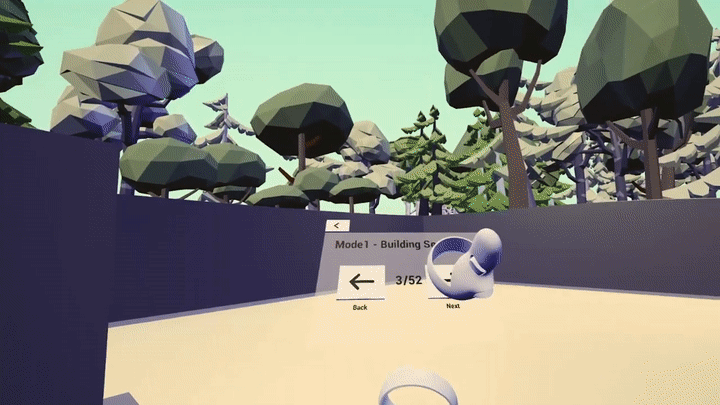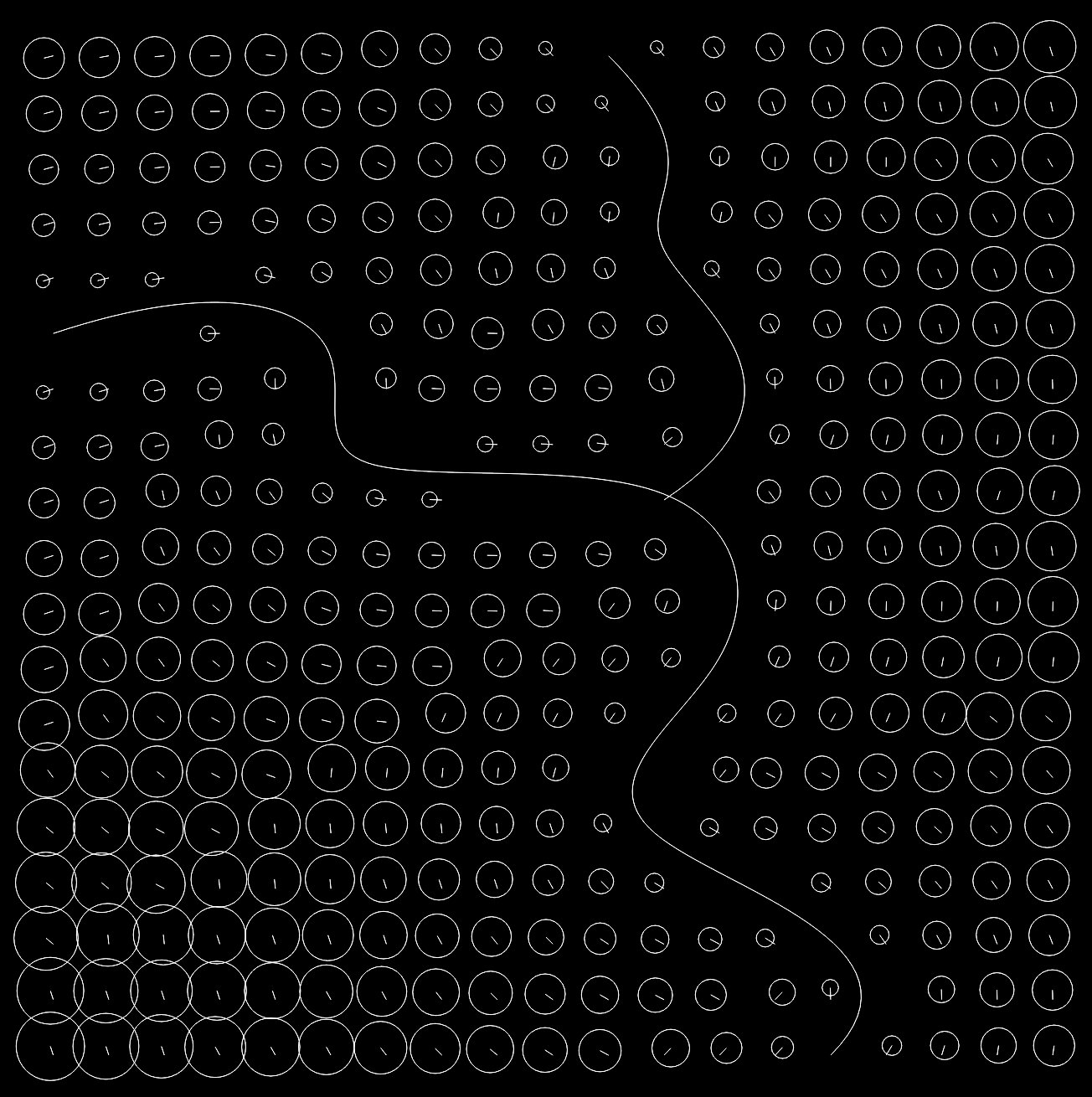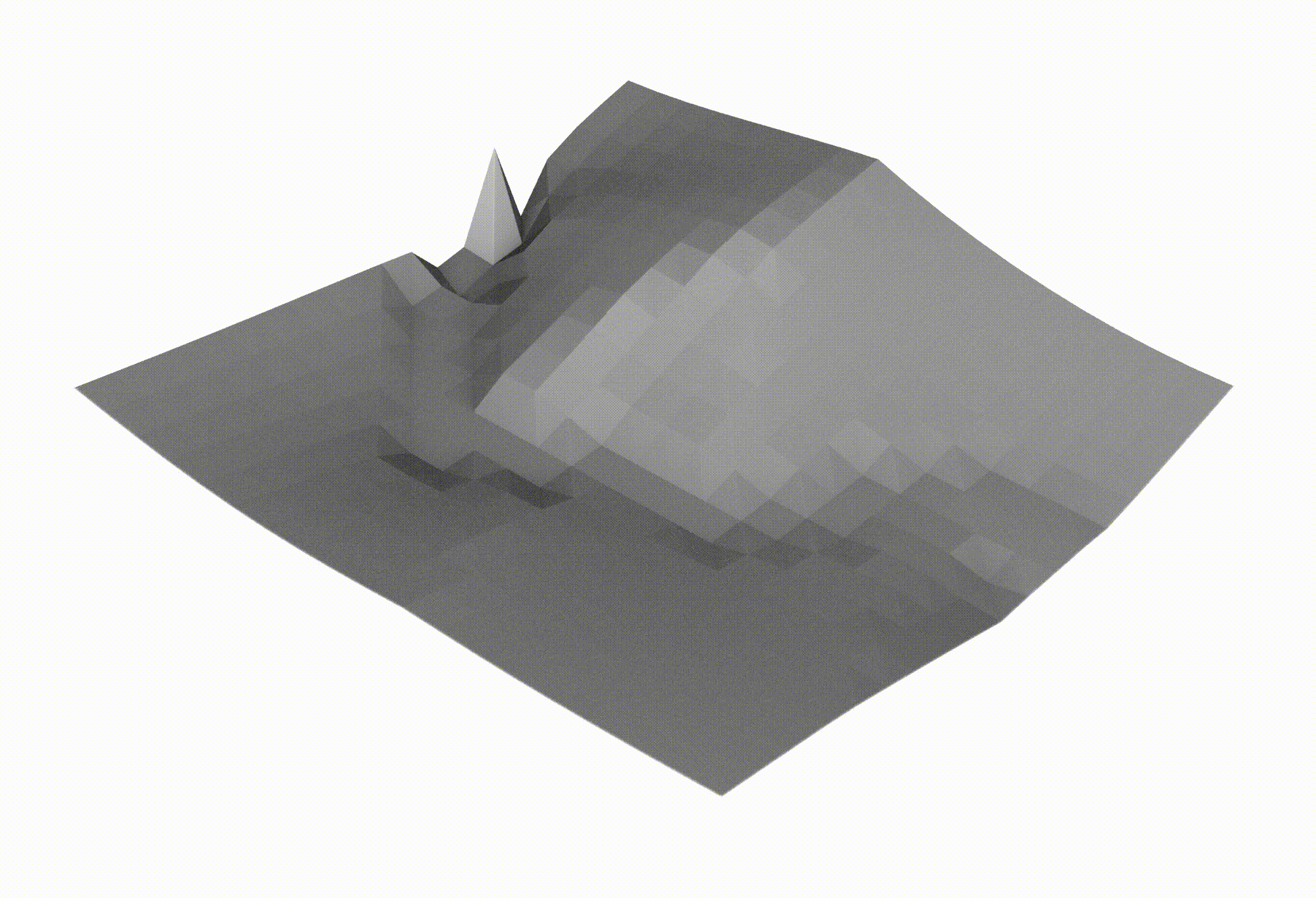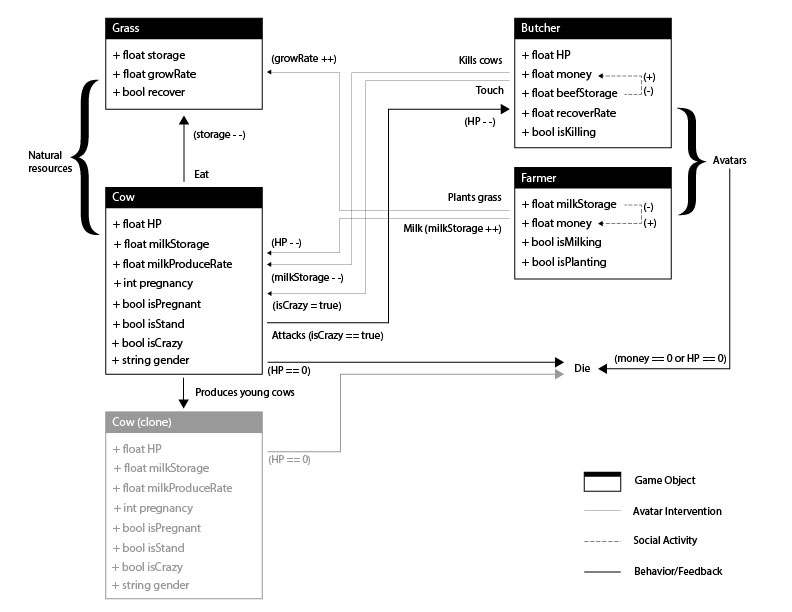AR/VR Mobile App Computational Design Urban/Landscape Video Game
As a generative designer, I code 3D with `RhinoScriptSyntax` in Rhino. As an interaction designer and frontend engineer, I design application, prototype user interface, and deploy APPs on different devices. I am trying to do something interesting/funny/hopefully useful with XR (VR/AR).
I like video games (PC/SWITCH/GameBoy/Mobile games...) and have spent a lot of time on it. I almost get rid of PC games after I switched to Mac from Windows (while spending more time on Nintendo Switch and Gameboy). I was trying to play and make some VR games for cardboard and Oculus quest 2, but I am not a fan of VR right now because dizziness just made me so uncomfortable. 15 min is the maximum time I can play with my quest 2. Now, I am working on a game series called `SillySimulation` with Unity.
VR Phillips House
 A VR game that provides an unforgettable experience in Phillips House. Two key experiences:
Menu includes two modes: building sequence and visit tour.
Team: Chung-Han Huang | Xiaohao Yang (Contribution: 3D model compiling and interaction coding) | Zixuan Zhao [source ]
A VR game that provides an unforgettable experience in Phillips House. Two key experiences:
Menu includes two modes: building sequence and visit tour.
Team: Chung-Han Huang | Xiaohao Yang (Contribution: 3D model compiling and interaction coding) | Zixuan Zhao [source ]
Motion capture - Virtual Garden
This study presents an application for crafting a 3D environment using a limited set of intuitive hand gestures. The application captures hand gestures through the use of a Qualisys motion capture system and uses them to manipulate objects in a virtual 3D game space created with Unity. The result allows the user to quickly manipulate a virtual terrain at a 1:1 scale. Team: David Minnix | Faith Gowe | Rushal Butala | Xiaohao Yang (Contribution: interaction design and coding)
GBCamera - Nostalgia for GameBoy camera
Pixel art lovers such as Nintendo Game Boy (GB) console users and photographers are interested in taking photos with the GB console+camera cartridge or upgrading the hardware (such as the camera lens and sensors) for better photography experiences. The mobile app is a pixel-art photograph tool enabling users to capture GB-like photos/videos. [source ]
The Game Boy Camera is an accessory released by Nintendo in 1998 for the original Game Boy handheld console. With the low resolution and only four shades of grayscale, it became iconic in the retro gaming and pixel art communities. Although it was a novelty at the time, the Game Boy Camera has a cult following today. Now, both the GB series console and the cart have yet to be produced, which makes it unavailable for many followers. The devices and carts used in markets (such as eBay) are becoming expensive. The proposed project can provide users with an alternative and more fun experience, allowing users to adjust the focal length by taking the advance on cellphone cameras. In addition, users will be able to build up their GB photo albums and share photos with others.
PlantPlace - for Plant-lover Community (Interface prototype)

This app aims to make it more convenient and economical for people to network with other plant lovers and get their favorite plants or offer their plants. This app allows people to post and share their wish lists and offer lists, and give the individuals with the right information based on the information of plants and other personal preferences. The app thus provides a map that displays all locations of community gardens and nurseries within the proximity of users. [read more ]
randomStairBranch
 This is a simple script developed with
This is a simple script developed with RhinoScriptSyntax. A simple agent method integrated with random walk was implemented. [source ]
flow 2D
| One way | Two ways |
|---|---|
 |
 |
2D flow - uses curve(s) as attractor(s) to control direction and size. [source ]
flow 3D
 3D flow - generates dynamic flow through 3D terrain. [source ]
3D flow - generates dynamic flow through 3D terrain. [source ]
Tower
 Spiral tower generated with a series of random curves and complex 3D lofted surfaces based on these curves. [source ]
Spiral tower generated with a series of random curves and complex 3D lofted surfaces based on these curves. [source ]
Terrain
 When a single attractor curve is applied, two scenarios are depicted: one where the UV points are not relocated by the attractor, resulting in a regular 3D surface, and another where the UV points are adjusted according to the attractor curve, creating a deformed surface that follows the curve’s contour. Similarly, with multiple attractor curves, a grid remains regular without relocation, leading to a uniform 3D surface. However, when the UV points are relocated based on the multiple attractor curves, the grid becomes more complex and irregular, resulting in a uniquely shaped 3D surface. [source ]
When a single attractor curve is applied, two scenarios are depicted: one where the UV points are not relocated by the attractor, resulting in a regular 3D surface, and another where the UV points are adjusted according to the attractor curve, creating a deformed surface that follows the curve’s contour. Similarly, with multiple attractor curves, a grid remains regular without relocation, leading to a uniform 3D surface. However, when the UV points are relocated based on the multiple attractor curves, the grid becomes more complex and irregular, resulting in a uniquely shaped 3D surface. [source ]
Recursive structure

| _ | _ |
|---|---|
 |
 |
Initially, a triangle with a specified radius is set up. This triangle undergoes a series of recursive “crack” operations three times, progressively breaking down the shape into smaller triangles. Following this, a first branch is established, and the structure undergoes another series of recursive branching operations, also repeated three times. This recursive branching generates an intricate, multi-layered 3D form. The attractor surface and branches guide the shape’s development, resulting in a detailed and complex geometric structure. [source ]
Recompose

Transform an input surface into a complex 3D pipe structure through a series of geometric operations. It begins with an initial surface, from which surfaces are generated using a UV point matrix to create a grid pattern. These surfaces are then randomly scaled while preserving their slope, area, and vertices. Next, the scaled surfaces are relocated vertically based on their slope, and circles are created at the vertices, scaled according to the area and slope. Finally, these circles are connected to form a continuous 3D pipe structure that twists and turns, reflecting the characteristics of the original surface. This process demonstrates how an initial geometric shape can be transformed into a complex, intricate 3D form. [source ]
Agent

Simulate the movement of agents in a 3D space, where agents interact with each other and their environment, leaving trails behind them. The interactions include attracting or repelling agents based on their proximity, and detouring around obstacles represented by meshes. [source ]
Lots for future

As a shrinking city, the renewal of Detroit faces many challenges and problems like climate change, increasing vacancy and poverty, food insecurity, and soil contamination.
Climate change has both positive and negative impacts on the environment of Detroit. Increased temperature may increase the frequency and length of extreme heat events and heavy precipitation events. Those communities with less canopy coverage and of high-density population and imperviousness could suffer more from extreme weather. On the other hand, climate change will also bring some opportunities including longer growing seasons and more irrigation water.
This project proposed a phasing strategy using the vacant land and urban agriculture to provide a solution to these problems and make a more sustainable and resilient development for future Detroit. [read more ]
Monster World (VR Cardboard)
Okay, Monster World is first game I did (with Unity). Even if it is messy and rough, I implemented all key features and interactions that can be deployed for VR Cardboard such as menu buttons, teleportation, grabbing, triggering, and populating prefabs as well as sound effects. Well, it is not a fantastic game but I think it is sloppy in a funny way.
SillySimulation
There are three games in the SillySimulation series. Each of them tells a story about survival. The environment has been extremely simplified and accelerated in games. There is always some trade-off in the game. [Github]
1. CowLand »»» [] play in fullscreen

In Cowland, the cow can propagate and eat grass very fast until it dies. Even if grass can recover (super slowly), the grassland will be destroyed by cows, which will die without grass (food) as the population increases. Players can choose an avatar in participant the game and may be able to change the simulation process. This game implemented a very simple “random walk” method to make the cow wander and stop and go.


2. Island »»» [] play in fullscreen

Island is the imagination of urbanization in the doomsday. Most of the land has been submerged as the sea level keeps rising. The trash, however, becomes an important resource for survivors. Survivors are building their last homes while the rising sea level is nibbling away their settlements. The player will be a manager of this community, deciding whether to force people to work overnight to build higher settlements before it is too late. The games was developed based on the idea of random branch I developed.



